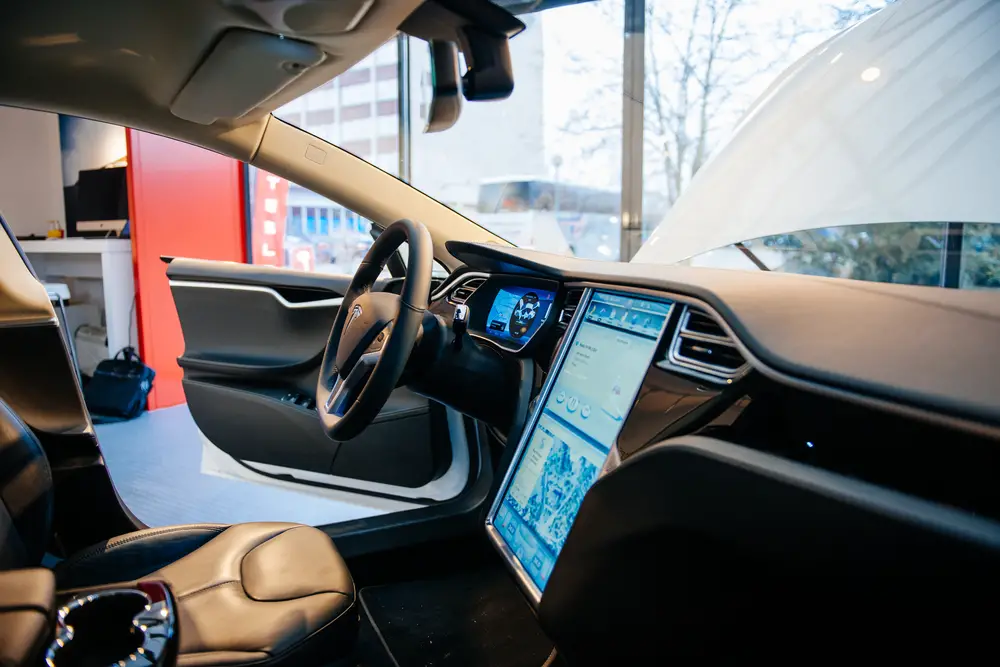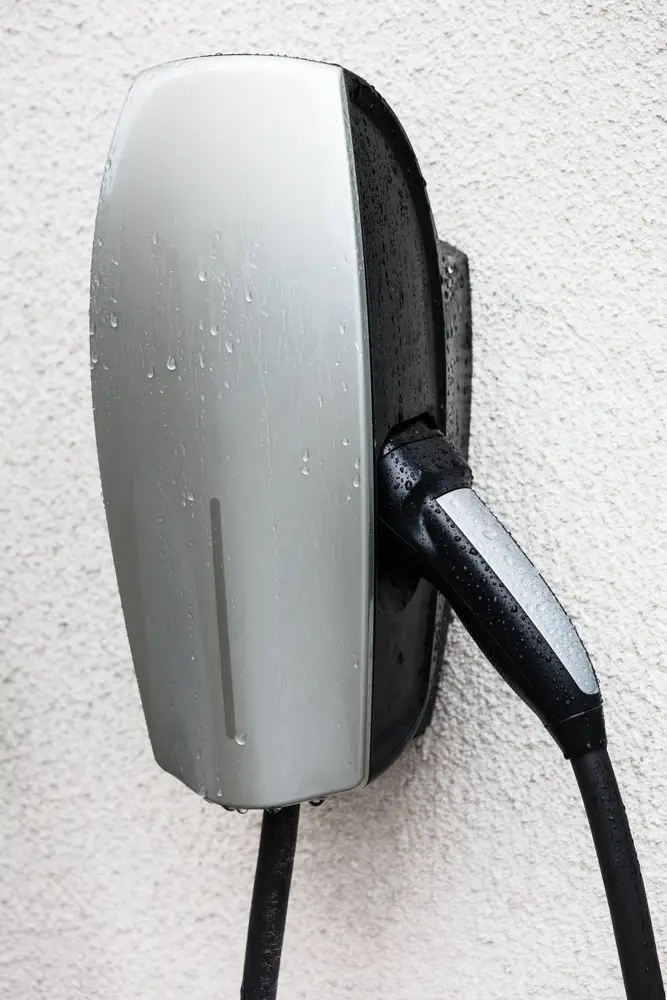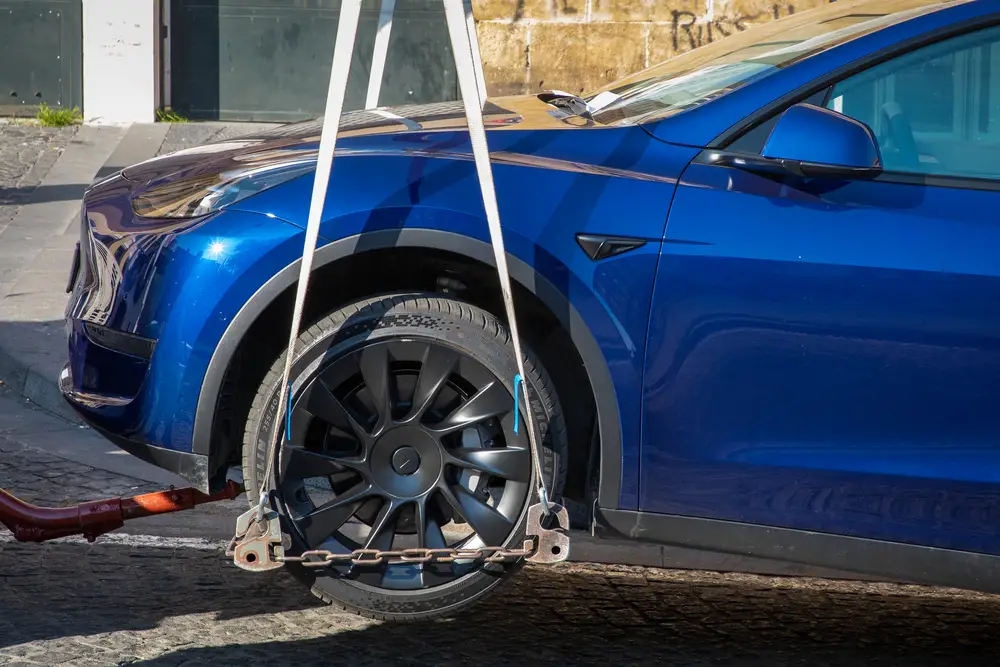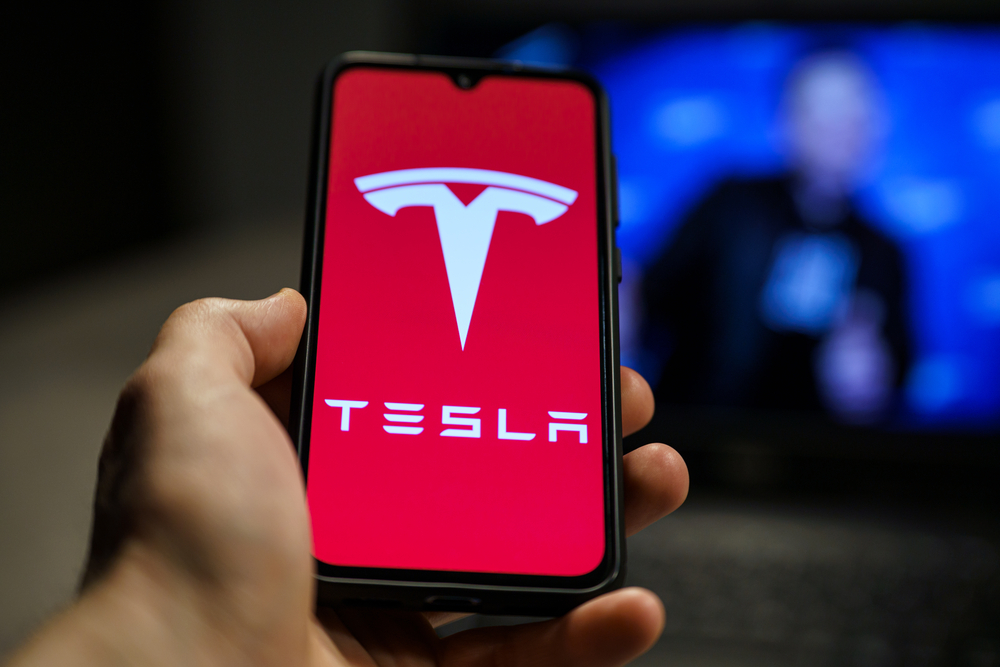Tesla electric vehicles are equipped with sophisticated systems designed to preserve battery life and enhance efficiency.
One key aspect of this is the vehicle’s ability to go into a “sleep” mode when not in use for an extended period.
This feature ensures that unnecessary energy is not being drained from the battery, prolonging its lifespan and maximizing range.
Quick Answer:
Yes, Tesla vehicles enter a “sleep” mode to save energy when idle. This minimizes battery drain by shutting down non-essential systems. After a while in ‘Park’, displays and other components turn off, conserving battery. Ensure the car is in ‘Park’ before exiting.
Understanding Tesla’s Automatic Controls
When it comes to Tesla’s automatic controls, there are a few features that you should be aware of. These controls make the Tesla experience more comfortable and convenient.
One feature is Tesla’s Auto-Shutdown. When you park your car and walk away, your Tesla will automatically turn off its headlights and other systems, including the climate control.
This is to conserve battery life and reduce energy consumption. As you approach your Tesla, the car will detect your key fob and automatically turn on the systems to prepare for your drive.
Additionally, if your Tesla becomes inactive for a long period, it will enter a sleep mode to further preserve battery life. This includes disabling the touch screen display and minimizing background processes.
When you open the door or press the brake pedal, your Tesla will wake up from this sleep mode and be ready for your next drive.
Tesla’s regenerative braking system is another automatic control worth noting. As you take your foot off the accelerator, the system converts your car’s kinetic energy into electricity and feeds it back into the battery.
Additionally, when you engage the brake pedal, the regenerative braking system works with the traditional braking system to slow your car down, saving energy in the process.
Tesla’s Power Management
Sleep Mode
When your Tesla isn’t in use, it has a built-in sleep mode to help preserve battery life. In sleep mode, the vehicle powers off non-essential systems and reduces energy consumption.
This mode is automatically activated when your car is not in use for an extended period, allowing for better battery life management.
While in sleep mode, you might notice that some features, like remote access via the Tesla app, may be temporarily unavailable or slower to respond. This is normal and helps in conserving energy when the car isn’t being used.
Battery Life Preservation
Tesla’s vehicles are designed to protect and preserve the battery’s lifespan. As a Tesla owner, you have several options to manage your car’s battery life.
First, you can adjust your charging settings in the car’s touchscreen. You have the option to limit the maximum charge level, which can help prolong battery life.
It’s recommended to set the charging limit to around 80-90% for regular daily use and use 100% capacity for longer trips when necessary.
Another way to preserve battery life is by minimizing exposure to extreme temperatures.
If you leave your car parked in extremely hot or cold weather, try to park in shaded or climate-controlled areas to help protect the battery from extreme temperatures.
To ensure your Tesla’s battery remains efficient, make sure to keep it charged. Regularly charging your vehicle and maintaining a recommended charge level will help maintain battery health.
Tesla’s Drive System
Driving With Tesla
When you drive a Tesla vehicle, you’ll experience the smooth and quiet ride offered by its electric motor. The drive stalk, located behind the steering wheel, is where you’ll find the drive modes for your Model S, Model 3, Model X, or Model Y.
Simply engage the drive stalk to switch between drive modes, making your driving experience seamless and enjoyable.
Performance and Efficiency
Tesla’s electric motor plays a significant role in both performance and efficiency. All Tesla models are known for their rapid acceleration, giving you confidence when merging onto highways or overtaking slower vehicles.
The electric motor also ensures a consistent transfer of power, providing smooth acceleration and deceleration without the typical gear changes found in traditional combustion engine vehicles.
In terms of efficiency, Tesla vehicles are among the most energy-efficient cars on the market.
There are several factors contributing to their high efficiency, such as:
- Regenerative Braking: This system recovers energy during deceleration, sending it back to the battery, which extends the driving range.
- Aerodynamic Design: Tesla vehicles are designed to minimize air resistance, reducing energy consumption, and increasing the driving range.
- Battery Management System: The advanced battery management system closely monitors the battery’s state, ensuring efficient energy usage and prolonging its lifespan.
Tesla’s Innovative Features
Summon Feature
In your Tesla, you can take advantage of the innovative Summon feature. This technology allows your vehicle to autonomously navigate in tight spaces, making parking a breeze.
By using the Tesla app or your vehicle’s touchscreen, you can initiate the Summon feature to have your Tesla pull in or out of a parking spot, garage, or narrow driveway.
Thanks to this innovation, you no longer have to worry about fitting into tight spaces or risking damage to your vehicle.
Sentry Mode
Another innovative feature that Tesla has added to enhance your vehicle’s safety is Sentry Mode. This security feature utilizes your Tesla’s cameras to monitor the surroundings when the car is parked.
In case of any potential threat, such as someone trying to break into your car, Sentry Mode will activate, displaying a message on your touchscreen screen and recording the event. The recorded footage is stored, which can be later accessed and reviewed.
This advanced feature further ensures that your Tesla stays secure, even when unattended.
Tesla’s Safety Measures
When driving a Tesla, you may wonder about its safety features. Tesla is renowned for implementing cutting-edge technology to ensure a secure driving experience.
As a Tesla owner, you can feel confident knowing that several safety measures are in place.
In the event of an emergency, your Tesla is designed to maintain its reliability and keep you safe. For instance, if the vehicle detects a potential collision, it alerts you and automatically applies the brakes to prevent or mitigate the impact.
Furthermore, Autopilot helps to minimize the risk of accidents by assisting in keeping your vehicle in its lane and adapting its speed to traffic conditions.
Tesla has taken measures to address situations when the driver may become unresponsive. When a Tesla vehicle notices the lack of interaction with the steering wheel or pedals for an extended period, it sends out a series of visual and audible warnings to the driver.
If these warnings are ignored, the vehicle will eventually slow down to a complete stop and turn on the hazard lights. This built-in safety measure demonstrates Tesla’s commitment to promote reliability and security on the road.
Finally, Tesla vehicles are designed to reduce the risk of battery fires. As part of their safety measures, the cars are equipped with a cooling system that lowers the temperature of the batteries in case they get too hot.
With these precautions in place, Tesla owners can feel confident about their vehicle’s safety and performance.
Exiting and Locking a Tesla
When you are ready to exit your Tesla, simply put the vehicle in park and unbuckle your seatbelt. The car will detect your movements and automatically turn off. Once the car is turned off, open the door and step out of the vehicle.
To lock your Tesla, you can use the key fob, your smartphone, or the Tesla app. If you’re using the key fob, simply press the lock button once you are outside the car. The vehicle will beep to confirm that it is locked.
If you prefer to use your smartphone, ensure that you have already set up your phone as a key through the Tesla app. With this setup, your Tesla will automatically lock once you walk away from the vehicle, and it will unlock when you return. There’s no need to take out your phone or press any buttons.
For additional control and convenience, you can use the Tesla app to remotely lock or unlock the car. Simply open the app, tap on the ‘Controls’ tab, and select ‘Lock’ or ‘Unlock.’ This is especially useful if you accidentally forget to lock the car or need to grant temporary access to someone else.
Tesla Model Specifics
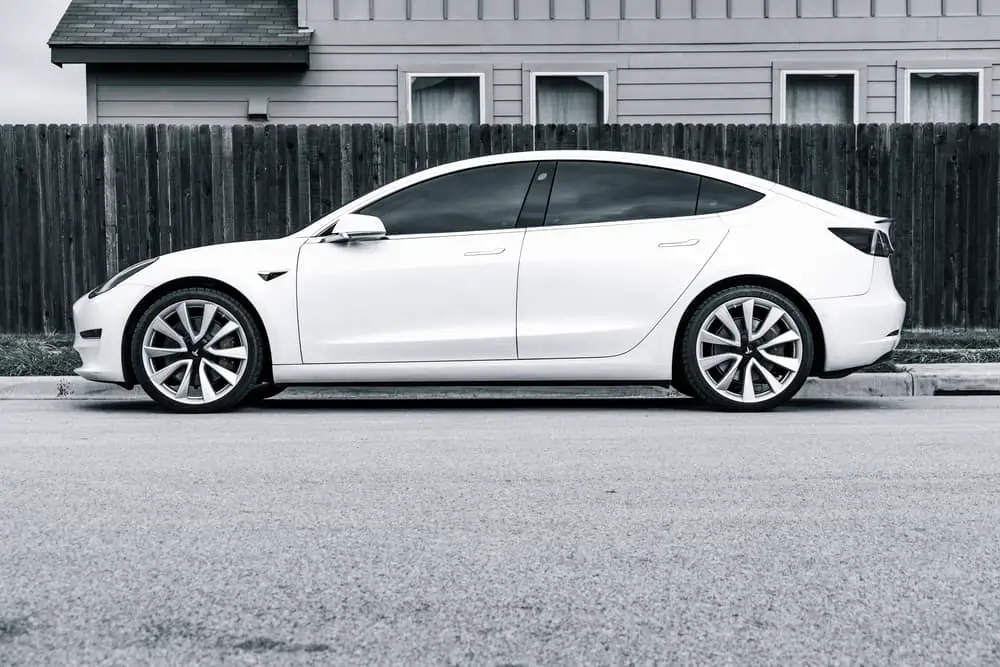
Model 3
The Tesla Model 3 is a popular electric vehicle within Tesla’s lineup. Not only does it feature highly-regarded performance and range, but it also contributes to a cleaner environment.
This innovation incorporates several advanced settings, including energy-efficient systems to minimize power usage. When you put your Model 3 in park, the vehicle enters a standby mode, reducing energy consumption.
However, the Tesla Model 3 does not fully turn off by itself, as certain functions like Sentry Mode and Cabin Overheat Protection may remain active to safeguard your vehicle.
Model S
As another prevalent vehicle option, the Tesla Model S shares various features with the Model 3. This includes the energy-saving standby mode that engages when you park your vehicle.
While the Model S does not completely shut off by itself, you can alter its settings to limit energy usage when parked.
For instance, turning off Cabin Overheat Protection, Sentry Mode, and other features can significantly decrease energy consumption.
Model X
The Tesla Model X, a luxury electric SUV, has similar characteristics to the Model 3 and Model S.
It does not turn off entirely when parked but instead enters a standby mode to conserve energy. You can optimize your Model X’s energy use by customizing its settings, such as disabling Cabin Overheat Protection, Sentry Mode, and other features that consume energy when the vehicle is not in use.
Model Y
The Tesla Model Y, a crossover SUV, offers more space and versatility while maintaining the key features found in other Tesla models.
Like its counterparts, the Model Y does not shut off completely when parked. Instead, it goes into a standby mode to preserve battery life.
You can further optimize energy conservation by adjusting settings like disabling Cabin Overheat Protection, Sentry Mode, and other energy-consuming features.
Cybertruck
Tesla’s Cybertruck is an upcoming addition to the lineup, with a unique, futuristic, and rugged design.
It has not been released yet, but it is expected to share many similarities with other Tesla models, including energy conservation modes. Nevertheless, we currently do not have official information on whether or not the Cybertruck will turn off by itself when parked.
Tesla’s Screen and Console Interface
When you step into a Tesla vehicle, one of the first things you’ll notice is the large touchscreen display that dominates the center console.
This screen serves as the primary interface for controlling many of the car’s functions, including climate control, navigation, and entertainment. Along with the screen, Tesla’s center console interface is designed to provide a sleek and user-friendly experience.
The responsive touchscreen ensures that you can navigate through various menus and settings with ease. With this interface, Tesla has simplified the overall user experience by removing physical buttons and switches typically found in other cars.
This results in a more streamlined and modern look while making it easy for you to access important vehicle information and perform actions during your drive.
One of the key features of Tesla’s screen and console interface is its regular over-the-air software updates. These updates often include new features, enhancements, and bug fixes, ensuring that your Tesla remains at the cutting edge of technology throughout its life.
While operating your Tesla, it is important to be aware of energy usage, range, and charging options. The center console provides clear and intuitive visuals to guide you through these aspects, making it simple to monitor your vehicle’s status and make adjustments as needed.
Although the touchscreen interface has a lot to offer, some users may have concerns about the screen turning off unexpectedly.
However, Tesla’s vehicles are designed to be reliable and efficient, with a sophisticated power management system in place. The screen and console interface typically remain fully functional whenever your Tesla is powered on and in use.
Tesla’s HVAC System
Tesla’s HVAC (Heating, Ventilation, and Air Conditioning) system provides you with a comfortable climate inside your vehicle. The system intelligently manages and maintains the interior temperature and air quality according to your preferences.
In terms of climate control, Tesla has integrated advanced technology to optimize energy efficiency while ensuring a comfortable environment. The HVAC system uses a heat pump, which improves efficiency and offers consistent temperature control throughout the cabin.
Tesla’s HVAC system also features a biohazard mode that can filter out harmful particles and allergens, providing clean air no matter the conditions outside.
When it comes to the question of whether a Tesla turns off by itself, the answer is yes; the vehicle’s HVAC system will turn off automatically in certain situations. This feature is designed to preserve battery life, especially when the car is in standby mode or parked.
However, you can remotely control and schedule the HVAC system using the Tesla mobile app, giving you the convenience and flexibility to adjust the climate control settings according to your needs.
Moreover, Tesla’s HVAC system is designed to efficiently cool or heat your battery as needed, prolonging its life and maintaining optimal performance.
This, in turn, ensures that your Tesla’s electric range remains consistent and reliable throughout your ownership experience.
Tesla Charging System
When charging your Tesla vehicle, there are several options available to ensure a smooth and efficient process. Tesla has developed its own charging infrastructure, including the Supercharger network and various home charging solutions.
To charge your Tesla at home, you can use the Wall Connector or the Mobile Connector. The Wall Connector is a more powerful and permanent installation, allowing for quicker charging times.
It can be installed in your garage or any other convenient location and is compatible with all Tesla models. The Mobile Connector, on the other hand, offers more flexibility as it can be plugged into different outlets, but may take longer to charge your vehicle.
For public charging, Tesla has a vast Supercharger network. These Supercharger stations are strategically placed along popular travel routes and offer rapid charging for long road trips.
Simply plug your Tesla in, and the car will handle the rest, letting you know when it’s ready for the next leg of your journey.
It’s worth noting that Tesla vehicles can also be charged at non-Tesla charging stations, thanks to the universal J1772 connector standard.
Your Tesla comes with a J1772 adapter, enabling compatibility with a wide range of public chargers available. To charge, simply attach the adapter to the charging plug and connect it to your vehicle.
The Tesla App
With the Tesla App on your phone, you can control various features of your Tesla vehicle. The app allows you to monitor your car’s status, such as charging progress and interior climate.
But does your Tesla turn off by itself through the app?
The Tesla App has a climate control feature that can turn off the HVAC system remotely. When you activate this feature, you can choose to turn the heating or air conditioning on or off as per your preference. This will help conserve energy when the car is not in use.
Another feature offered in the Tesla App is remote keyless entry. You can unlock or lock your Tesla doors using your phone by connecting through the app. However, this feature does not turn off the car’s main power.
If your Tesla is in sleep mode or has energy-saving settings enabled, it will eventually turn off certain functions, like lights and display, to save battery.
To ensure the safety of your Tesla, it can’t be turned off entirely using the Tesla App. This limitation helps prevent unauthorized access or potential theft issues since the app uses your phone as the primary key.
It’s well-designed with your security in mind while still providing convenience and ease of use.
Software and Updates
As you own a Tesla vehicle, it’s crucial to understand its software and updating process. Tesla continually enhances its cars’ performance and safety through over-the-air software updates.
These updates might also introduce new features or refinements to existing functionalities.
When your car receives a software update, it is common for you to witness a reboot or restart of the system. It’s essential to note that these restarts are a normal part of the updating process and do not cause harm to your vehicle.
However, your Tesla does not turn off by itself during these updates except for the reboot. All you need to do is ensure that your car has a stable Wi-Fi connection to receive and install these updates seamlessly.
It is also important to remember that your Tesla will notify you when there’s an update available and when it’s safe to drive. In case you find your car’s system restarting after the software update or not functioning as expected, do not panic.
Give it some time, as the rebooting process might take a few minutes, and your car’s system should be back to normal.
Keep in mind that staying up-to-date with your Tesla software is crucial to enjoying the cutting-edge features and ensuring your car’s safety and performance remain top-notch.

